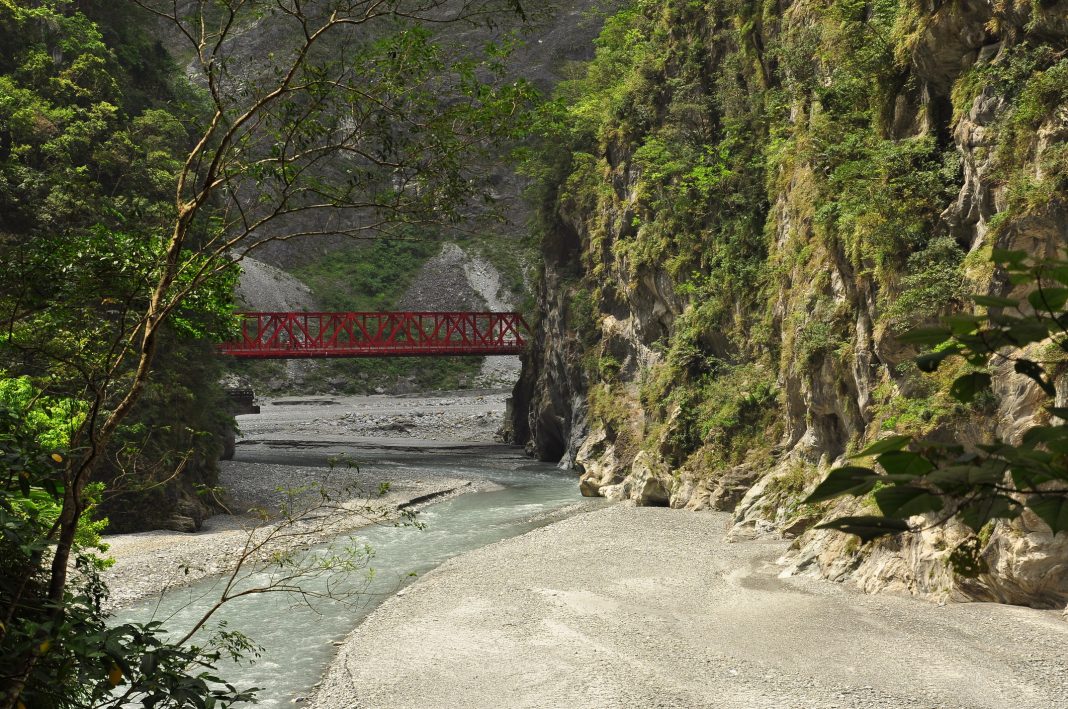Professor Tzen-Yuh Chiang’s team looks toward microbial farming in the mountains slopes of South Taiwan to aid habitat recovery, as low-land slopes have been affected by climate change
A sustainable farming approach using microbes, or microbial farming, delivers effective habitat recovery – with a focus on strengthening the health of crops and attracting organisms back to ecosystems.
The impacts of global warming on low-land slopes
The over-exploration of mountain slopes by humans and unpredictable drought and heavy rainfall under global warming have deteriorated slope soils’ structure and physical/chemical properties, and the need for habitat recovery on these slopes is urgent.
Subsequently, mudslides have caused slope collapses, inevitably impacting agricultural activities and production, which has resulted in the disturbed low-lands being abandoned.
How can engineering and microbiology knowledge and techniques contribute to slope habitat recovery?
By utilizing soil profiling of slopes and adjacent farms, researchers can shed light on habitat fragility and allow the implementation of engineering methods to better aid habitat recovery.
There is a need to take soil structures and underground water into account when helping slope habitats recover. Underground water regulation via engineering means not only reduces the risks of slope slides but also makes water utilization and recycling efficient to battle extreme climate conditions.
Other routes of accelerating habitat recovery for slope farms are through the revegetation of native plants from neighboring forests and understanding the importance of soil health with a high diversity of microbes that can interact with plant roots.
Encouraging microbial farming to ensure thriving biodiversity
Hans, a major Chinese tribe, has over-exploited the mountain slopes in South Taiwan for a long history of more than 400 years in this area, inevitably leading to vegetation loss and soil deleterious.
Facing the environmental crises of sliding lands and degraded soils, a friendly farming approach using microbes is employed to match the mission of sustainable environments.

Unlike the utilization of pesticides and chemical fertilizers that often degrades the soil quality and biodiversity, microbial farming strengthens the root health of crops and attracts various organisms back to the ecosystems.
Vegetation, fertilization and Actinobacteria in Dong-Shan
In the agricultural lands of Dong-Shan, plant diversity is lower, and the nitrogen sources are highly dependent on fertilization. Such application enriched the proportion of Proteobacteria, which possess diverse metabolic functions, while reducing the abundance of Actinobacteria, with high potential in decomposing organic matter.
Mature secondary forests are characterized by a more active nitrification system, which converts ammonium to nitrate to supply the needs of producers in the ecosystem.
Abandoned farmlands showed increasing plant diversity and particularly enriched Actinobacteria, suggesting that the elevated litter complexity requires more organic decomposers.
We hypothesized the reduction of Actinobacteria towards a better profile of ecological functions in Dong-Shan fields.

Agriculture in low-elevation mountainous areas
Agriculture in low-elevation mountainous areas in Taiwan plays a paramount important role in the overall economy (Fig. 1).
Many slope instability events have been reported in the past, and their number increases with time, potentially due to climate-change-induced natural disasters. It has been reported that greenhouse gas, emissions have increased from 313 to 414.72 parts per million from 1958 to 2021.
COVID has worsened carbon emissions
Moreover, the COVID-19 pandemic has worsened carbon emissions due to the need of human activities and increasing energy usage. To overcome the adversaries from carbon emissions, various carbon neutralization technologies, such as carbon sequestration, have been actively under research.
In the meantime, all available methods are required to maintain the stability of slopes.
The importance and power of sustainable engineering methodologies
Our project uses sustainable engineering methodologies to stabilize the slopes with vegetation to aid habitat recovery. Several species that can grow strong roots to increase the adhesive forces in soil were identified.
In addition, suitable water channels are implemented to create a better hydrologic system, hence reducing the erosion and collapse of slopes.


This work is licensed under Creative Commons Attribution-NonCommercial-NoDerivatives 4.0 International.


